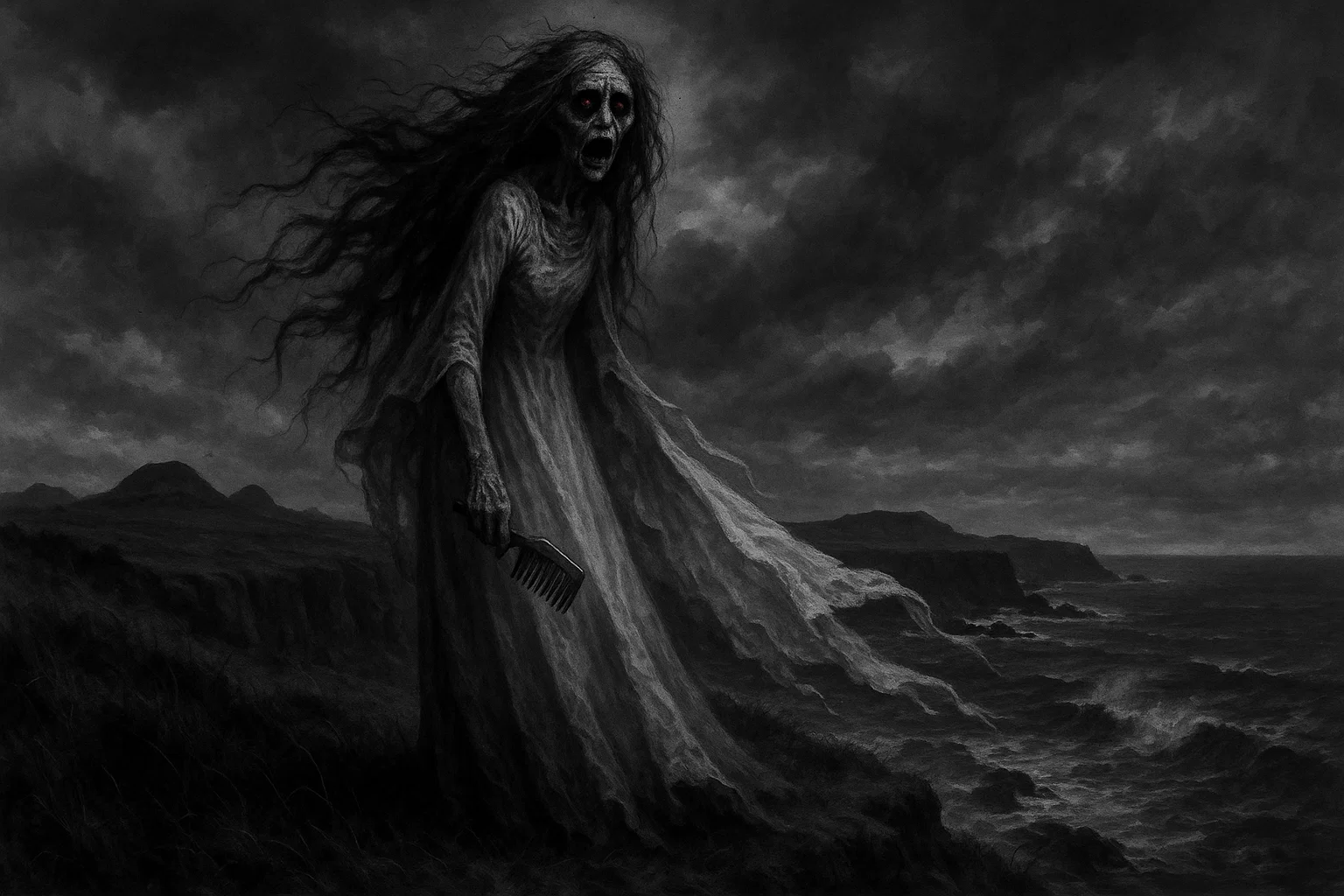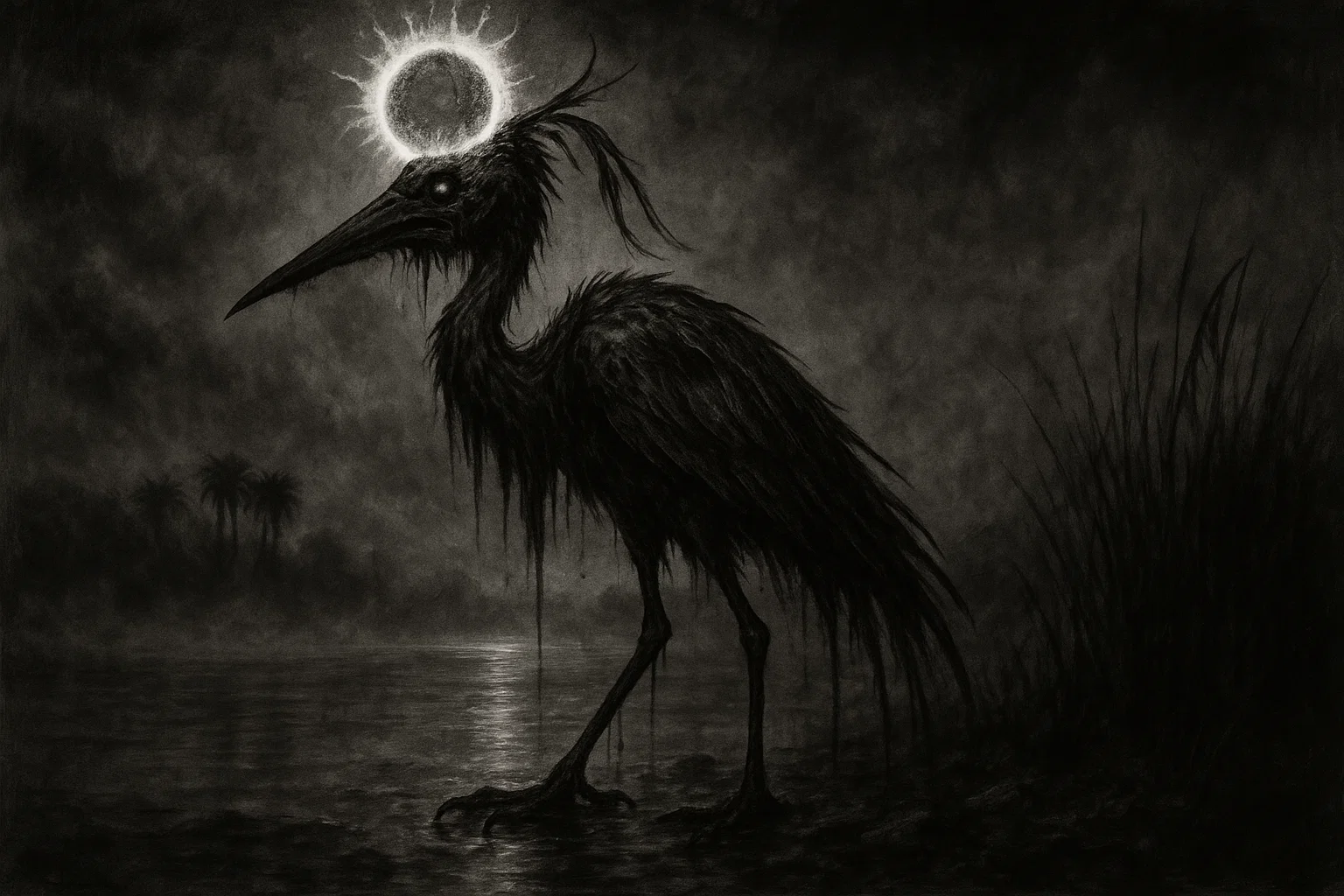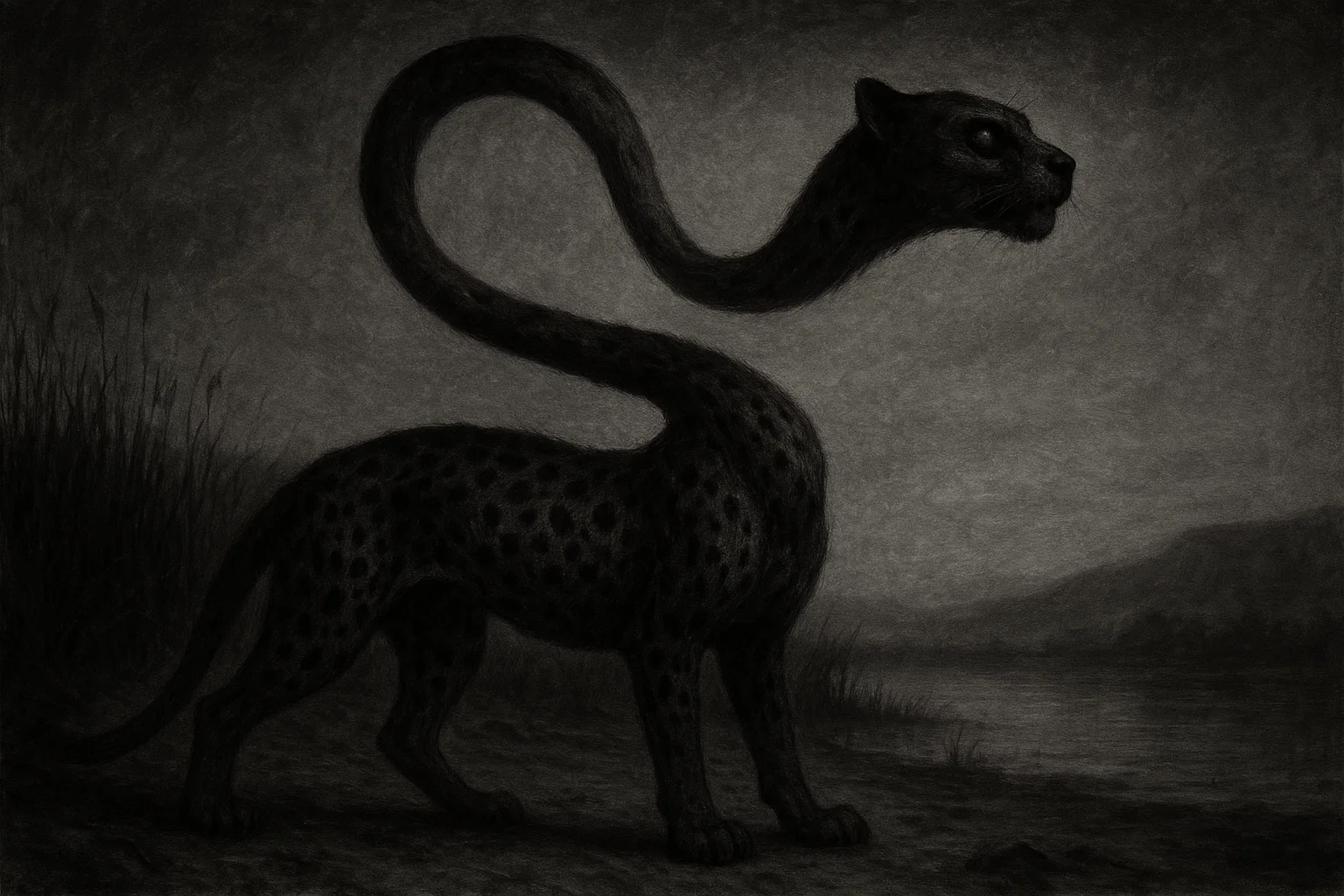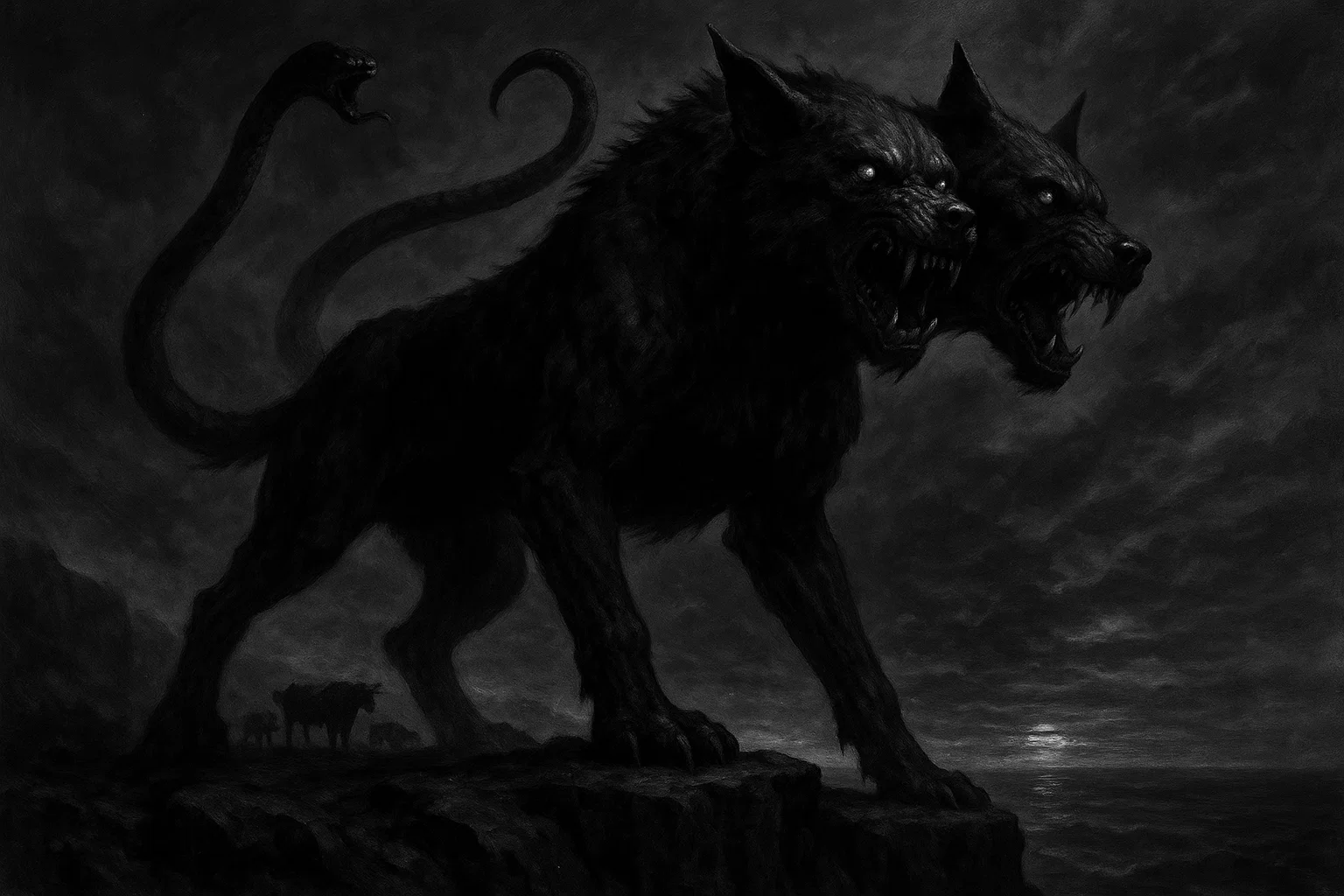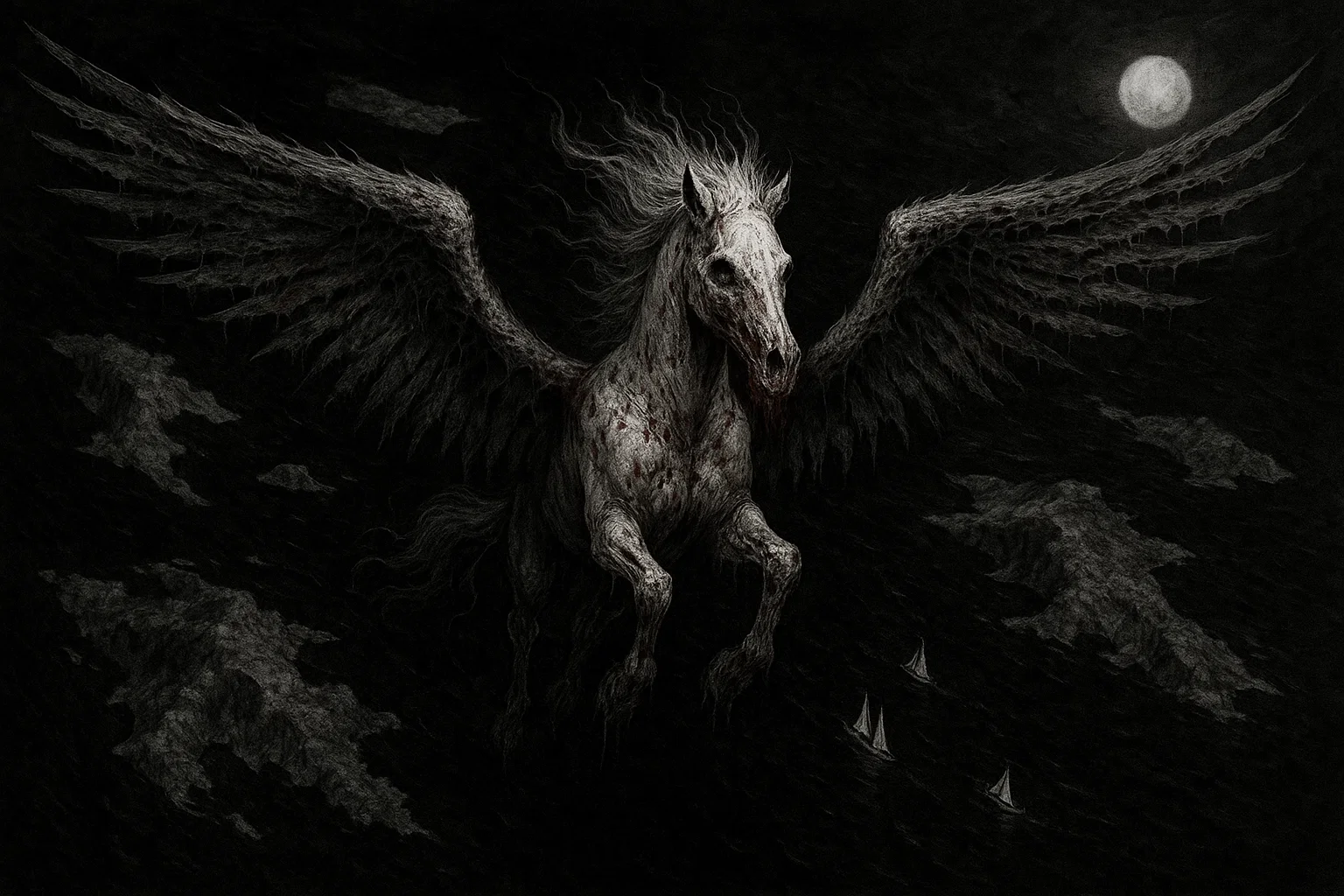In the chilling horror story Messages from Beyond, set in the fog-laden town of Cold Hollow, Pennsylvania, during the superstitious Victorian era, a haunting mystery unfolds as Thomas Kipling receives a cryptic letter from his long-dead brother, Simon. This unsettling horror story weaves a tapestry of dread, supernatural intrigue, and psychological terror, drawing readers into a Gothic nightmare where empty graves and eerie whispers hint at a sinister force lurking in the shadows.
Summary
Chapter 1: The Letter
In the autumn of 1885, Cold Hollow, Pennsylvania, was a town where the air itself seemed to hold its breath. Nestled in a valley cradled by the Appalachian hills, it was a place of damp mists and whispering winds, where the scent of decaying leaves mingled with the faint tang of coal smoke from distant mines.
The townsfolk, steeped in the superstitions of the Victorian era, spoke in hushed tones of spirits, vampires, and otherworldly forces that lingered just beyond the veil. For Thomas Kipling, a widower in his late thirties, Cold Hollow was both home and prison—a place where grief had rooted him as firmly as the gnarled oaks in the town’s forsaken cemetery.
Thomas was a man worn thin by loss. His wife, Eliza, had succumbed to cholera in 1880, her laughter silenced in a matter of days. His younger brother, Simon, had followed two years later, withered by a wasting illness that stole his vibrancy at twenty-two.
Thomas, once a schoolteacher with a passion for literature, now worked as a carpenter, his hands calloused from shaping wood for the town’s wealthier families. His deep-set eyes and gaunt cheeks spoke of sleepless nights, and his quiet demeanor masked a heart heavy with sorrow.
Simon had been his opposite—a poet with a quick smile, whose recitations of Byron could charm even the sternest matron. His death had left Thomas adrift, his only solace found in routine and the solitude of his rented clapboard house.
The house itself was a relic, its walls peeling and its windows rattling like chattering teeth in the wind. On a chilly evening in late August, as Thomas sat by the hearth with a tattered copy of Tennyson’s In Memoriam, a faint rustle broke the silence.
He glanced at the door, expecting the wind that often howled through the valley, but found instead an envelope—yellowed, unstamped, and blank—slipped beneath the threshold. Its presence was an intrusion, as if the house itself had betrayed him.
His fingers trembled as he picked it up. The parchment was brittle, its edges curling like burnt leaves, and when he tore it open, his breath caught. The handwriting was Simon’s—unmistakable, with its elegant flourishes and slight slant, a script Thomas had seen in countless letters and poems. The words chilled him to the bone:
“Dear Thomas, my mind frays like old cloth, my body weak as a whisper, but I am alive. I will come to you soon. Wait for me. —Simon”
The room seemed to shrink, the air thick with an unnatural chill. Thomas had held Simon’s feverish hand as he died, had wept at his funeral, had seen the coffin lowered into the earth. This letter was impossible, a cruel mockery of his grief.
The Victorian era was rife with tales of the supernatural—ghosts that whispered through walls, doppelgangers that stole lives—but Thomas was a man of reason. Or so he told himself. Yet the letter’s ink seemed to pulse under the lamplight, and the words carried an intimacy that made his skin crawl.
“I am alive.” Was it a prank, a miracle, or something darker? He clutched the parchment, its edges singeing his fingers as if touched by unseen flames, and resolved to uncover the truth.
You May Also Like: The Statue | Horror Story
Chapter 2: The Coffin
The next morning, Thomas marched to the office of Sheriff Amos Crane, a gruff man with a walrus mustache and a penchant for order. “I need to see my brother’s grave,” Thomas demanded, thrusting the letter forward.
“This is Simon’s writing, but he’s been dead for thirteen years. I need to know he’s still there.”
Amos, skeptical but moved by Thomas’s haunted expression, agreed to an exhumation. The request was unusual, but the Kipling family was respected, and the letter’s eerie presence was hard to dismiss.
By noon, a grim procession gathered at Cold Hollow’s cemetery: Amos and his deputy, Jacob, a wiry youth clutching a silver cross his mother had blessed; Father Benedict, the town’s elderly priest, his rosary beads clicking like a metronome; Dr. Elias Morrow, the coroner’s assistant, with his leather satchel of tools; and a dozen townsfolk, their whispers buzzing like flies drawn to decay.
Among them was Mrs. Eleanor Hargrove, the town’s storyteller, her eyes sharp with curiosity, and young Timothy Reed, barely eighteen, whose nervous energy made him fidget with his cap.
The cemetery was a desolate place, its gravestones tilting like broken teeth under a gnarled oak that clawed at the sky. Simon’s plot lay in its shadow, the earth undisturbed since 1872.
As the men dug, the air grew heavy with the smell of damp soil and something fouler, like rot carried on the wind. Thomas stood apart, the letter burning in his coat pocket, his heart pounding with a mix of dread and impossible hope. What if Simon was alive? What if some miracle—or curse—had spared him?
When the shovels struck wood, a hush fell over the crowd. The coffin was hauled from the earth, its surface splintered but intact, as if time had barely touched it. Father Benedict sprinkled holy water, his hands trembling, as Amos pried open the lid.
A rancid odor escaped, like death exhaling, but the sight inside was worse: the coffin was empty. No body, no bones, not even a shred of the shroud Simon had been buried in. Just a hollow box, lined with faded velvet that seemed to mock their expectations.
“It’s not possible,” Amos muttered, his face pale. “I was at the funeral. I saw him laid to rest.”
“So did I,” Thomas whispered, his voice barely audible over the murmurs of the crowd.
Mrs. Hargrove crossed herself, muttering about the “Hollow Wraith,” a spirit said to steal souls. Timothy backed away, his eyes wide with fear. Father Benedict’s prayers grew louder, his voice quivering: “This is the Devil’s work. An unclean thing walks among us.”
Dr. Morrow, ever the skeptic, examined the coffin, his fingers tracing the velvet. “Perhaps grave robbers,” he suggested, but his voice lacked conviction. Grave robbers didn’t leave coffins pristine, and Simon had been buried with nothing of value.
You May Also Like: Charlie No-Face | Horror Story
Chapter 3: The Madness
News of the empty coffin spread like wildfire, igniting terror in Cold Hollow. The Victorian era was a time when superstition held sway, and the townsfolk saw omens in every shadow.
Doors were bolted, windows shuttered, and garlic hung above thresholds to ward off vampires. Children were forbidden from playing after dusk, their laughter replaced by hushed fears. Some whispered that Simon had been taken by a demon, others that he had become one himself—a wraith or worse, risen to haunt the living.
Thomas retreated to his house, the letter his only companion. He read it obsessively, searching for answers in its cryptic words. “My mind frays like old cloth…” What did it mean?
His dreams were plagued by visions of Simon—pale, gaunt, his eyes glowing with an unnatural light, his voice whispering, “I’m coming, Thomas.” The house itself seemed to turn against him.
Floorboards creaked as if paced by unseen feet, windows rattled without wind, and shadows danced against the lamplight, forming shapes that vanished when he looked directly. One night, he found the letter on the floor, though he was certain he’d left it on the table. Its edges were singed, as if touched by a flame he couldn’t see.
Sheriff Amos, desperate to quell the panic, organized nightly patrols. Jacob, the deputy, patrolled with his cross clutched tight, his eyes darting to every shadow. He confided in Thomas one evening, his voice trembling: “I heard something last night, near the cemetery. A laugh, like Simon’s, but… wrong.”
Dr. Morrow, a man of science, scoffed at the supernatural talk but offered no explanation for the empty coffin. “A clerical error, perhaps,” he muttered, though no one believed him.
Father Benedict held nightly vigils, urging the townsfolk to trust in God, but his sermons were laced with warnings of divine judgment. Mrs. Hargrove’s tales grew darker, her voice low as she spoke of the Hollow Wraith, a spirit that lured victims to their graves with promises of reunion.
The town’s children, once carefree, now whispered of seeing figures in the fog—tall, thin, with eyes like burning coals. Old Mr. Carver, a retired miner, claimed his mirror showed a face not his own, its mouth moving in silent speech. The air in Cold Hollow grew heavier, as if the town itself were suffocating under an unseen weight.
You May Also Like: The Minneapolis Mystery | Horror Story
Chapter 4: Whispers in the Fog
By mid-September, the hysteria had begun to fade, though an undercurrent of dread remained. Life resumed its uneasy rhythm, but Thomas could not escape the letter’s grip. He stopped working, his tools gathering dust, and spent his days staring at the parchment, its words seared into his mind.
The house grew colder, the air thick with a metallic tang, like blood mixed with earth. He began to hear whispers—faint, unintelligible, yet unmistakably Simon’s voice—coming from the walls, the floor, even the letter itself.
On the night of September 20, a fog thicker than any the town had seen rolled into Cold Hollow, cloaking the streets in a suffocating embrace. The air carried a sharp, coppery scent, and the silence was broken only by the occasional drip of water from unseen eaves.
Three men—Samuel Holt, a burly blacksmith; Ezra Finch, a weathered farmer; and Timothy Reed, the nervous youth—were trudging home from the tavern when they passed the cemetery.
The fog was so dense they could barely see their own boots, but a flicker of movement caught their eye: a tall, thin figure gliding among the gravestones, its form shimmering as if not entirely solid.
“What was that?” Timothy whispered, his voice cracking like dry twigs.
“Just the fog,” Ezra said, though his hand tightened on his walking stick.
Samuel, ever bold, stepped closer, his breath visible in the cold. “That’s no fog. Look!” The figure paused at Simon’s grave, its head bowed as if in prayer. Its outline seemed to writhe, as if struggling to hold its shape.
Then, with a suddenness that made Timothy scream, it turned toward them, its face a blur of pale flesh and glowing eyes. It vanished into the mist, leaving only a faint laugh—Simon’s laugh, but hollow, like wind through a skull.
The men bolted to the sheriff’s office, their faces drained of color. Amos, roused from sleep, rallied his men and headed to the cemetery, lanterns barely piercing the fog. Thomas, alerted by the commotion, joined them, his heart thudding like a drum.
The air felt wrong, as if the fog itself were watching. When they reached Simon’s grave, they found the earth clawed open, the coffin exposed once more. Its lid was ajar, and a foul stench rose from within, like death distilled into vapor.
Amos, his hands shaking, lifted the lid. His lantern flickered as he let out a guttural cry. “God have mercy…”
Thomas pushed forward, his breath catching. Inside the coffin lay two bodies, locked in a grotesque embrace. One was Simon, his face decayed but unmistakable, his skin gray and peeling like old parchment. The other was Thomas—or a corpse that wore his face, its eyes wide with terror, its mouth frozen in a silent scream.
Both bodies were in an advanced state of decay, their flesh crumbling like ash, their bones gleaming through rotted cloth. The letter, singed and crumpled, was clutched in the second corpse’s hand, its ink smeared as if wept over.
Dr. Morrow, summoned in haste, examined the bodies with a trembling hand. “These men have been dead for at least ten years,” he said, his voice hollow. “The tissue, the bones… it’s impossible. Thomas was alive this morning.”
He pointed to the brittle bones, the desiccated flesh, his scientific composure cracking under the weight of the inexplicable.
The crowd recoiled, some sobbing, others praying. Father Benedict clutched his rosary, chanting Latin verses as if to banish the horror.
Amos ordered the coffin sealed, but the image of the brothers—entwined in death, their faces mirroring each other’s agony—burned into every witness’s mind.
Timothy, trembling, whispered, “They were holding each other… like they didn’t want to let go.”
You May Also Like: The Eery Story of Edward Mordrake | Horror Story
Chapter 5: The Curse
The discovery shattered Cold Hollow. Families fled, convinced the town was cursed. Those who remained spoke of the Kipling brothers as harbingers of doom, their story a warning of forces beyond comprehension.
The letter, pried from the corpse’s hand, was burned by Father Benedict, who declared it a relic of evil. But its words lingered in the minds of those who had seen it: “I am alive. I will come to you soon.”
The town became a place of shadows. Lanterns flickered out without cause, mirrors reflected faces that weren’t there, and whispers echoed in empty rooms. Mrs. Hargrove claimed to have seen the brothers standing at the edge of the cemetery, their eyes glowing like embers, their hands clasped as if bound by an unseen chain.
Jacob, the deputy, swore he heard Simon’s laughter while patrolling the graveyard, a sound that followed him home and haunted his dreams. Even Dr. Morrow, the skeptic, admitted to nightmares of a shadowy figure that whispered his name, its voice a blend of Simon’s and Thomas’s.
Thomas’s house became a place of dread, its windows dark, its air thick with an unnatural chill. Those who passed by reported hearing footsteps, heavy and deliberate, pacing inside.
One night, Timothy, driven by youthful bravado, peered through a window and screamed, claiming he saw two figures—identical, decayed, and staring back at him with eyes that burned through the fog. He fled, vowing never to return, and was found the next morning, pale and muttering about “the brothers who won’t sleep.”
The cemetery, once a place of quiet reverence, was abandoned, its gates locked and overgrown with thorns. Yet on foggy nights, some swore they saw the brothers, hand in hand, walking among the graves.
Their voices carried on the wind, a chilling promise: “I am alive. I will come to you soon.” Old Mr. Carver, driven to madness, carved their names into his doorframe, claiming it would keep them at bay. It didn’t. He was found dead a week later, his face frozen in terror, his mirror shattered.
No answers emerged to explain the horror. Had Simon’s spirit summoned Thomas to the grave? Had a doppelganger stolen Thomas’s form, only to return it in death? Or had some rift between worlds opened, swallowing the brothers whole?
Dr. Morrow, desperate for logic, suggested a mass delusion, but the physical evidence—the decayed bodies, the singed letter—defied reason.
Father Benedict spoke of a curse, a punishment for sins unknown, but even his faith wavered in the face of such terror.
Cold Hollow never recovered. The town dwindled, its streets empty, its houses crumbling into the earth. The cemetery became a forbidden place, its secrets buried with the Kipling brothers.
Yet the story of Messages from Beyond endured, whispered by those who dared to speak of it, a testament to a terror that no prayer, no science, could banish. And in the fog, some say, the brothers still walk, their footsteps echoing, their voices calling to those who listen too closely.



